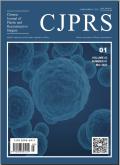TcPO2 and TcPCO2 monitoring for free flap perfusion assessment
Chinese Journal of Plastic and Reconstructive Surgery
Pub Date : 2025-09-01
DOI:10.1016/j.cjprs.2025.04.001
引用次数: 0
Abstract
Background
Free flap transplantation has emerged as a prevalent technique in reconstructive surgery for patients with oral cancer. Postoperative monitoring of flap perfusion is critical for flap survival, necessitating early detection and timely intervention. Developing a monitoring approach that is highly sensitive, specific, non-invasive, continuous, and cost-effective is crucial for accurately assessing flap perfusion and informing clinical decisions.
Methods
From April 2024 to December 2024, 20 patients with oral tumors requiring flap transplantation were enrolled at the Ninth People’s Hospital affiliated to Shanghai Jiao Tong University School of Medicine. Continuous monitoring of various free flaps was performed utilizing a transcutaneous blood gas analyzer, both before and after surgery. This approach allowed for real-time measurement of transcutaneous partial pressure of oxygen (TcPO2) and transcutaneous partial pressure of carbon dioxide (TcPCO2), facilitating the evaluation of perfusion dynamics across various free flap types.
Results
After free flap transplantation, a reduction in blood supply resulted in a rapid decline in TcPO2 (to below 10 mmHg), accompanied by a gradual increase in TcPCO2, peaking at 135 mmHg. Following vascular anastomosis and blood flow restoration, TcPO2 and TcPCO2 exhibited opposite trends. Statistical analysis revealed no significant differences in TcPO2 and TcPCO2 measurements among the various flap types (P<0.05), indicating a consistent pattern of change across all flaps.
Conclusion
The transcutaneous blood gas analyzer proves to be a reliable method for monitoring free flap perfusion. Dynamic changes in TcPO2 and TcPCO2 effectively reflect blood supply status, enabling early detection of vascular compromise and potentially enhancing flap preservation outcomes.
Trial registration
ChiCTR, ChiCTR2400086395. Registered March 4, 2024. Prospective registration. https://www.medicalresearch.org.cn/↗ChiCTR2400086395.
tcppo2和TcPCO2监测游离皮瓣灌注评估
游离皮瓣移植已成为口腔癌患者重建手术的一种流行技术。术后皮瓣灌注监测对皮瓣存活至关重要,需要及早发现并及时干预。开发一种高度敏感、特异性强、无创、连续且具有成本效益的监测方法对于准确评估皮瓣灌注并为临床决策提供信息至关重要。方法选取上海交通大学医学院附属第九人民医院于2024年4月至2024年12月收治的20例需要皮瓣移植的口腔肿瘤患者。在手术前后,利用经皮血气分析仪对各种游离皮瓣进行连续监测。这种方法允许实时测量经皮氧分压(TcPO2)和经皮二氧化碳分压(TcPCO2),便于评估各种自由皮瓣类型的灌注动力学。结果游离皮瓣移植后,血供减少导致TcPO2迅速下降(低于10 mmHg), TcPCO2逐渐增加,峰值为135 mmHg。在血管吻合和血流恢复后,tcppo2和TcPCO2表现出相反的趋势。统计分析显示,不同皮瓣类型的tcppo2和TcPCO2测量值无显著差异(P<0.05),表明所有皮瓣的变化模式一致。结论经皮血气分析仪是监测游离皮瓣血流灌注的可靠方法。tcppo2和TcPCO2的动态变化能有效反映血供状况,有助于早期发现血管受损,并有可能提高皮瓣保存的效果。试验注册chictr, ChiCTR2400086395。注册于2024年3月4日。未来的登记。https://www.medicalresearch.org.cn/& nearr ChiCTR2400086395。
本文章由计算机程序翻译,如有差异,请以英文原文为准。
求助全文
约1分钟内获得全文
求助全文
来源期刊

Chinese Journal of Plastic and Reconstructive Surgery
Surgery, Otorhinolaryngology and Facial Plastic Surgery, Pathology and Medical Technology, Transplantation
CiteScore
0.40
自引率
0.00%
发文量
115
审稿时长
55 days
 求助内容:
求助内容: 应助结果提醒方式:
应助结果提醒方式:


